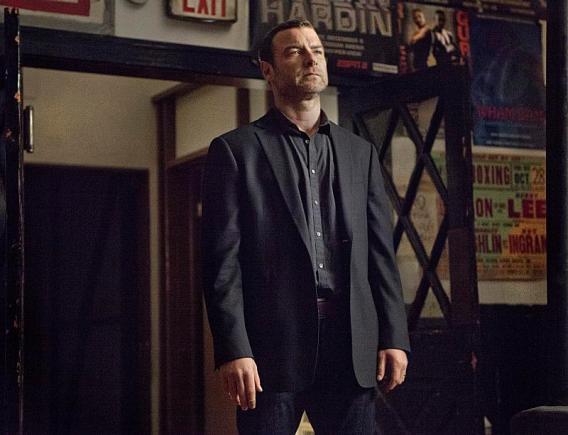Early in the first episode of Ray Donovan, which aired on Showtime last night, the eponymous Hollywood fixer gets a phone call. Donovan, played by Liev Schreiber, listens patiently, issues a few instructions, and then tells the panicking sports star on the other end of the line, “You don’t think you’re the first person I’ve dealt with who woke up in bed with a dead body?”
No, Ray Donovan, I’m sure you’ve handled more than your fair share of bed bodies. The problem is that, as a viewer, I, too, have seen it before. I’ve also seen damaged tough guys, demanding wives, selfish parents, messed-up siblings, snake-in-the-grass Hollywood lawyers, dumb actors, and deluded agents. And I’m very familiar with your way of introducing a female character and then involving her in a sex scene in a matter of seconds.
Prestige cable dramas are starting to seem like an exercise in TV Mad Libs. The Huffington Post’s Maureen Ryan put it best in her Ray Donovan review, comparing the show to a “Frankenstein’s monster, assembled from an array of shopworn parts.”
Given that this is a drama about a tough guy from an ethnic, criminally connected East Coast clan who works with actors, singers, executives and industry lawyers, ultimately the show comes off as a less inspired version of The Sopranos with a side of Entourage—with all the veneration of machismo that combination implies.
Perhaps it’s because I just read Brett Martin’s Difficult Men: Behind the Scenes of a Creative Revolution, which is about the post-Sopranos “golden age” of television, but of late my antihero fatigue has turned into a full-blown antihero allergy.
Difficult Men is an excellent read, and it offers a convincing explanation of why the new premium cable dramas valorized antiheroes. Liberated from the restrictions of network TV—no advertisers to worry about and no chance of being canceled before the full season aired—and keen to display all that freedom, shows like The Sopranos, The Wire, and Deadwood emphasized “characters whom, conventional wisdom had once insisted, Americans would never allow into their living rooms: unhappy, morally compromised, complicated, deeply human.” So, sure, that’s where they came from. But I’m ready to yell, “Next!”
Ray Donovan isn’t a terrible show—the acting is excellent, Jon Voight gives an amazing performance as an epically selfish man, and the story lines aren’t entirely predictable. It just doesn’t seem to have anything new to say. In an interview with Willa Paskin, the show’s creator, Ann Biderman, seemed refreshingly visceral in her attitude to generating a fictional universe—it seems to boil down to “What interests me?” And her attraction to macho men is apparent.
But reviewing Ray Donovan, the Wrap’s Tim Molloy put his finger on something that’s been bugging me for a while. He said, it “seems to think that showing people fighting, cursing and getting it on is enough to make them seem authentic. It isn’t. They also need to seem believable when they’re not in a boxing gym or bedroom.”
Television’s larger problem is that Ray Donovan isn’t the only show whose episodes could be broken down as “familiar, boring, fighting, familiar, boring, screwing.” And the others have fewer redeeming qualities. Programs like BBC America’s Copper and Ripper Street seem to use the exact-same beat sheet: formulaic plot lines interrupted by sex, brawling, and shocking language. (In Copper’s case, the shocks come from no doubt historically accurate use of the N-word, rather than premium cable’s F-word.) Copper is now two shows into its second season, and its new focus on New York history—not to mention the addition of Donal Logue as a Tammany Hall macher—is an improvement over the rote procedural-in-mutton-chop-whiskers that was Season 1. But it still hasn’t figured out how to be interesting when the action shifts away from the police station or the whorehouse.
Television is often formulaic—but good television doesn’t let the formula show. It may be time to find a new model.
